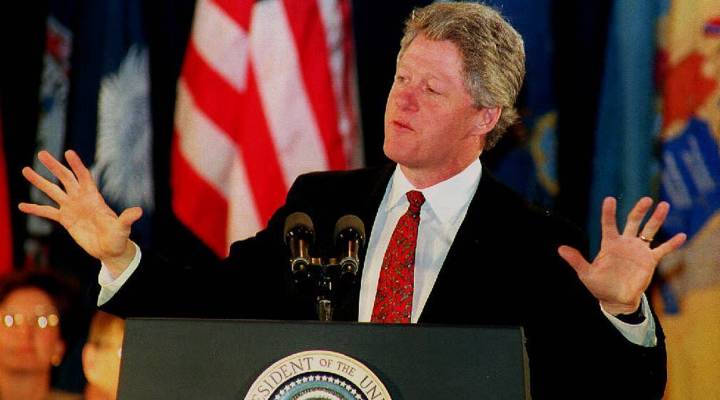
How welfare has changed since 1996, in three charts

Note: This piece originally ran in 2016, we’re reposting it this week in light of updated welfare data.
Twenty years ago, the federal government took a pretty simple cash welfare system — if you were poor and had children, you were guaranteed a welfare check — and replaced it with a program called Temporary Assistance to Needy Families. The result was welfare reform that was, and still is, confusing and controversial. That’s the focus of the first season of our podcast, The Uncertain Hour.
To dig into the background of this reform, we decided to take a look at the funding behind the policy (you can check out more of those figures in our state-by-state database). The main thing you need to know? After TANF went into effect, the number of families getting cash assistance plummeted.
The law had four main goals: support families with cash welfare ( like the old program), get welfare recipients into jobs, reduce out-of-wedlock pregnancy and encourage marriage. Under TNAF, states get to decide how to spend federal funding to reach those goals.
Nationwide, about half of welfare funding goes toward “core” spending on things like cash assistance, child care and work-related support, while the rest goes to other, sometimes-vaguely defined, welfare-related activities. That ratio of “core” to “non-core” varies across the country.
For example, Alaska spends 91 percent of its TANF dollars cutting checks, promoting work and providing child care. South Carolina, on the other hand, spends less than 16 percent on these core goals of welfare reform.
So what’s that other stuff? Sometimes it’s college scholarships, sometimes it’s after school programs, sometimes it’s marriage counseling. Every state spends its money differently, but nationwide we’re spending way more on that other stuff than we did when President Bill Clinton signed welfare reform into law in 1996.
You can see what this chart looks like for your state using our tool, “Your State on Welfare.” To hear firsthand some of the crazy ways states spend their welfare money, subscribe to the Uncertain Hour.
There’s a lot happening in the world. Through it all, Marketplace is here for you.
You rely on Marketplace to break down the world’s events and tell you how it affects you in a fact-based, approachable way. We rely on your financial support to keep making that possible.
Your donation today powers the independent journalism that you rely on. For just $5/month, you can help sustain Marketplace so we can keep reporting on the things that matter to you.












